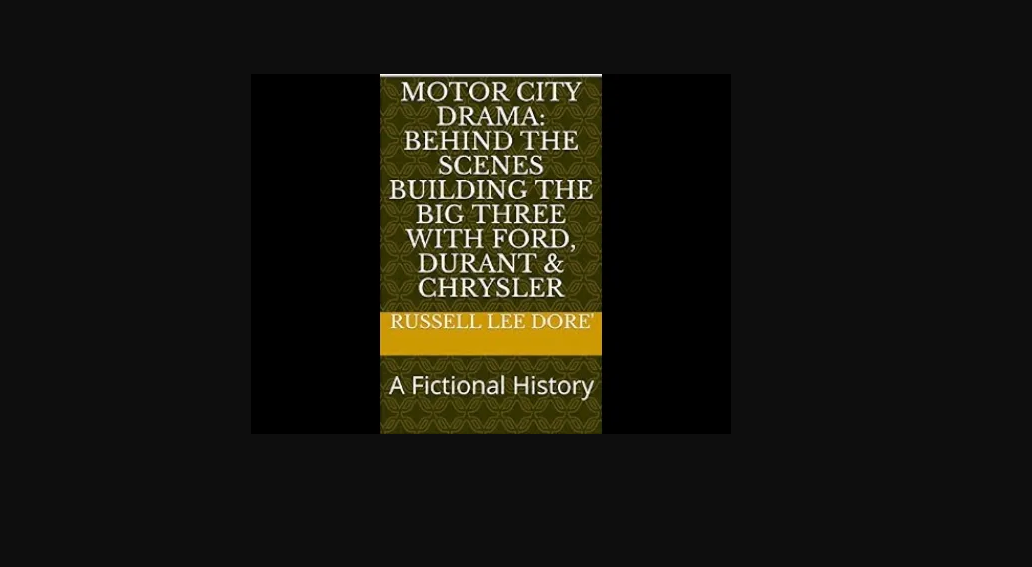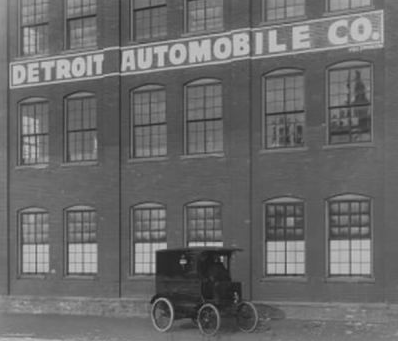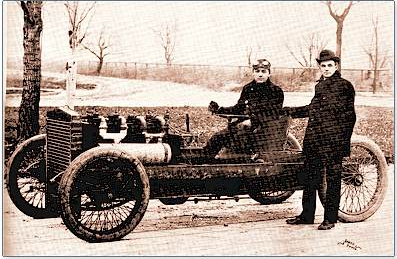Motor City Drama: Henry Ford Meets Alex Malcomson

Since I grew up in the metro Detroit area, I have at times become oblivious to the fact that I live in a very special area. Amongst all the negative things one hears about Detroit these days, Corruption, crime, our sports's teams....it was one of the beacons of light of this country. At one point in time, it was regarded as the Paris of the midwest. One of the reasons for the high praise of the city back in the day, is the birth of the automobile industry and how it came to affect this area. That is where we introduce the newest book we will be taking a deep dive into: "Motor City Drama" by Russell Dore.
Chapter One of Russell's book tells the story of Henry Ford getting the ball rolling on the soon to be company that will bear his name. This is where our journey will start from, and the meeting that took place between two men that would birth one of the most iconic automobile brands in the world today.
Detroit Automobile Company

Henry Ford, one of the founders of the Ford Motor Company we know today, had his start in the automobile industry when he obtained a job at the Michigan Car Company in 1879 (Bryan, 2007). The Michigan Car Company was founded in 1863/1864 by James McMillan and John Newberry (Michigan-Peninsular Car Company, 2006). This was a manufacturing company that built freight cars for the railroad industry, and lo and behold Henry Ford himself would walk in looking for a job in 1879. In a striking resemblance to my career path, Henry would bounce around from job to job for some time. He later worked at the Detroit Dry Dock Engine Works as a machinist where steam engines were manufactured and repaired for maritime vessels (Encyclopedia of Detroit). He returned to the family farm in 1882 and eventually set up a lumber company. Then in 1891, he finds himself at the Edison Illuminating company back in Detroit. By 1894, Henry was promoted to the chief engineer at the company and was well on his way to gaining more and more experience with engines and electrical engineering. A huge breakthrough came in 1896 when on his own volition, he built a horseless carriage called the "Quadricycle". After selling the quad car and using the funds to build another car, Ford was pushed by Edison to continue on his path of Gasoline powered cars, but Ford knew he needed more financial help in order to continue down this path (Weiss, 2003).
In stepped the mayor of Detroit at the time, William C. Maybury, who started introducing Henry to various notable people in the Detroit area at the time. One of the prominent people was William H. Murphy, a man who was one of the early lumber barons of Michigan, and took an interest in Henry's automotive experiments. William Murphy, along with a group of investors, pooled in about $15,000 in capital to start the Detroit Automobile company in 1899 (Weiss, 2003).
Detroit Automobile Company Dissolves
Ford was splitting his time between Edison and the newly formed company, and I can't imagine the type of stress that resulted from working two jobs. So, Henry ends up resigning from his position at Edison in order to work on Detroit Automobile products full time, and without a guaranteed salary mind you...
Investors in the company were looking to compete with Oldsmobile, and in that, they wanted to make money quickly. Ford, even though embracing the assembly line later with the Ford Motor Company, wanted to work on building a great product (Weiss, 2003). He was hyper focused on making parts for a race car. This is where he thought the company could generate great success, by drawing attention to a highly performative vehicle. The two sides were at odds a little bit, and I don't think Henry had really focused on getting things to market quickly. It is said that the company ended up losing $86,000 for the investors in the project, and only pushed out 10 trucks. Ford ultimately was not the master of efficiency back in these early days, he was heavily detailed oriented in design vs pumping out product. His race car ended up being successful due to his ingenuity in making it lighter, but it did not help the company make money. Detroit Automobile Company officially folded in January of 1901 (Bryan, 2007).
Reorganizing Into a New Company
The one good thing to come about from Ford's success in racing was that it convinced some of the investors in Detroit Automobile Company to back the formation of a new company called Henry Ford Company. This time, Henry obtained more of an equity stake in the company, but it did not curb his intentions on focusing on racing. The rift that was present at Detroit Automobile was still present at HFC (Henry Ford Company). Henry wanted to work on racing cars while investors wanted something that they could sell in order to make a profit. Henry ended up leaving the company in 1902, being able to get some cash out of the resignation along with some of his inventions, racing parts, and maybe most importantly, the use of his name (Weiss, 2003).
The Racer

Ford got his potential dream job when a man by the name of Tom Cooper approached him to build a race car. They set up shop in a spot in Downtown Detroit and got to work building two race cars, "999" and "Arrow". Ford and his workers got the cars up and running and found a race that they would enter into in order to test it out. A race was held in Grosse Pointe, MI on October 25, 1902, where famed race car driver, Barney Oldfield, drove the 999 to victory (Bryan, 2007). The racing success would catch the eye of Alexander Malcomson, Detroit's well known Coal dealer and somebody who Ford had actually met while he was working at Edison.
Ford Motor Company Forms
Alexander had some capital, about $3000, to put forward to fund Ford's project of building an automobile. Alex smartly, and probably due to the previous failed stints of Ford, had a business proposal drafted that stated the costs of the car that would be built under this newly formed company. This was probably in part to prevent continually sinking in a ton of capital into the project without getting much by way of a finished sellable product, which Ford managed to do at his previous other ventures. Another management move Alex made was making John Gray, his uncle who ran Detroit's German-American bank, president (Bryan, 2007). The leadership and control of the company looked to be mainly concentrated away from Ford purposefully due to his previous failed ventures. There was no machine shop present in the beginning at the newly formed company. Malcomson had his own personal clerk keep a watchful eye over Henry as well to ensure the racing bug did not bite him again (Weiss, 2003). FMC (Ford Motor Company) ended up being the beginnings of success for Henry Ford, not without its challenges still. It all started with the Model A, and later building larger models of cars, much to probably the distate of Ford who spent his time trying to make smaller lighter race cars earlier in his career. Henry had his hands tied though because even though he had 25.5% stake in FMC, Malcomson as well as the other investors had the higher percentage and were able to navigate the direction of the company (Weiss, 2003). Henry ended up forcing a stock sale of Malcomson and other investor's shares most likely due to the decreasing profitability of FMC. This was due to Henry starting a manufacturing company that sold exclusively to FMC at a fairly high price. While the manufacturing company was making money, FMC's profits decreased due to this new business relationship. Ford, after the stock sale of Malcomson and others, ended up with a 58% share of the company, and it served as a turning point in Ford Motor Company history (Weiss, 2003).
Sources:
Bryan, F. R. (2007, October 19). The Birth of Ford Motor Company. The Ford Story. Retrieved July 24, 2022, from https://web.archive.org/web/20071020113157/http://www.hfha.org/birthfomoco3.htm
Michigan-Peninsular Car Company. (2006, April 11). Retrieved July 24, 2022, from https://www.midcontinent.org/rollingstock/builders/michigan-peninsular.htm
Encyclopedia of Detroit. Detroit Historical Society - Where the past is present. (n.d.). Retrieved July 24, 2022, from https://detroithistorical.org/learn/encyclopedia-of-detroit/detroit-dry-dock-company
Weiss, H. E. (2003). Chrysler, Ford, Durant, and Sloan: Founding giants of the American Automotive Industry. McFarland.
Pictures:
https://www.thehenryford.org/collections-and-research/digital-collections/artifact/223416/ https://web.archive.org/web/20071019183607/http://www.hfha.org/birthfomoco2.htm